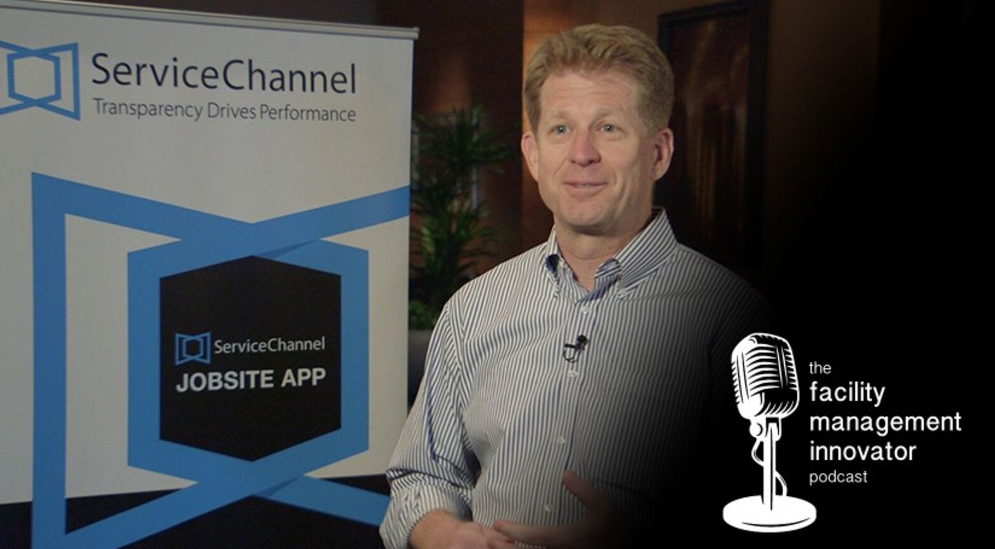5 Key Steps to Effective Contractor Management

Today, facilities management professionals and their teams are required to manage highly distributed enterprises with locations (stores, restaurants, buildings, outlets, healthcare centers, etc.) all over the country and the world.
For the repair and maintenance of these facilities, FM teams need to source service providers and have an effective contractor management system for each location across multiple regions in all the major contractor trades. Importantly, many FM teams often rely on third-party service providers and vendors for the ultimate success of their programs.
However, as headcount and budget for FM teams are constantly scrutinized and remain tight, FM teams everywhere are asked to do more with less. FM teams must manage their contractors in the most cost-effective and operationally efficient ways to complete their work orders, making sourcing, hiring, and managing the best vendors for the job a never-ending challenge.
These factors can impact the perception of FM organizations as expensive cost centers instead of being viewed as strategic centers of excellence. In addition to these challenges, FM teams face the following challenges regularly, including:
- Limited visibility into work order progress by both FM and location staff using manual tracking methods (pen and paper).
- No easy way to get real-time status updates on any given work order.
- Inefficient communication between all parties.
- Difficulties in tracking spending and managing costs for any work order or service request.
- There is no objective metrics/measurement system to gauge vendor performance, retain great contractors, and weed out lower-performing ones (too much reliance on anecdotal recall).
What is the Contractor Management Lifecycle?
The contractor management lifecycle refers to a structured process that many organizations use to manage contractors and service providers. The full contract lifecycle involves 4 key stages, including sourcing, hiring, ongoing management, and performance evaluation.
Modern service automation platforms, which include the integration with web- and mobile-based tools, support this process. Most of these platforms include work order management, analytics, and communication features that centralize information and provide real-time updates.
Having access to these benefits helps facility managers streamline decision-making and improve accountability across their workforce. Contractor and service provider management using this lifecycle approach avoids the pitfalls of ad-hoc sourcing, hiring, and managing, which can increase costs and lead to inconsistent performance and poor quality of service.
How to Effectively Manage Your Contractors
Once this operational lifecycle is in place, facilities teams can implement the following five steps toward maximizing their effectiveness in managing contractors.
Step 1: Optimize Your Vendor Network
The first step of contractor management is selecting the right service providers. Without a structured process, your organization may rely on random selection. The problem is that using random selection to employ contractors may lead to higher costs, inconsistent results, and inefficient workflows.
To address these challenges, some organizations turn to intermediaries to find the best independent contractors for the job. However, hiring and paying these intermediaries to source contractor personnel also costs the organization money.
Service automation tools offer a better solution by providing analytics and insights to help you identify the best-performing vendors. You can prioritize contractors familiar with your existing systems while maintaining reliable tracking, reporting, and invoicing.
Service Automation Success Story: National Distributor & Wholesaler
Challenge: A large distributor and wholesaler of plumbing, HVAC, and other equipment manages over 1,400 locations nationwide and over 7,000 contractors across various trades. This large volume of contractors made vendor performance management, training, and payments difficult.
Result: This company reduced its service providers to 600 top-performing independent contractors based on criteria like cost, responsiveness, and resolution time. They accomplished this task by using service automation to analyze key performance indicators (KPIs). As a result, they can now negotiate better pricing and implement a data-driven independent contractor management program.
Step 2: Automate Your Work Order Dispatching
Using traditional “pen-and-paper” documentation for contractor dispatch may cause inefficiencies in large-scale facilities management. That’s because analog dispatch practices generally have poor visibility into issue statuses and minimal vendor accountability.
Service automation software reduces these risks through automated dispatch and tracking features. Authorized users can create, monitor, and complete work orders through web or mobile platforms — and preferred vendors can be pre-assigned by location or trade to keep requests moving quickly and accurately.
Service Automation Success Story: International Casual Dining Restaurant Chain
Challenge: A large casual dining company with 100,000 employees and over 1,500 restaurants faced limited visibility into service scope and spending for their work orders. Ad hoc work order management at each location caused inconsistent performance and often led to higher costs.
Result: Allowing all employees the ability to open work orders through a service automation platform helped them standardize operations across all locations. Now, staff can open work orders and communicate directly with the FM team and contractors through the platform on mobile devices.
Step 3: Implement Cost Controls
Analyzing spending patterns, vendor performance, payroll, and location-specific expenses can help you identify opportunities for cost optimization. You can use this information to set clear financial benchmarks and create standardized pricing agreements with clients.
However, you cannot expect your FM teams to implement these controls without accurate data. Service automation platforms with analytics and business intelligence (BI) features provide real-time and historical data to track costs using KPIs.
This data enables FM teams to adopt best practices like setting not-to-exceed (NTE) pricing for routine projects and work orders and evaluating proposals from new vendors. Teams can also identify spending anomalies or outliers that reveal potential issues such as pricing errors.
Service Automation Success Story: Regional Fast Casual Restaurant Chain
Challenge: A 100-location US chain relied on a basic work order tracking system that required extensive manual effort from their employees. Their system’s limited visibility made it difficult to enforce financial controls.
Result: By integrating service automation analytics, this company was able to implement consistent financial controls, including establishing NTE pricing for the first time. Now, they have better visibility and have reduced their repair and maintenance costs by over 35%.
Step 4: Ensure Contractor Compliance
Manual compliance checks are often time-consuming. Many organizations rely on contract workers to self-report key documents like W-9 forms, insurance, licenses, and other documentation.
The good news is that service automation software simplifies this process by providing a centralized dashboard that tracks each vendor’s information. You may also notify your vendors if you believe that they do not have the correct qualifications to meet regulatory requirements.
Managing compliance is key to risk mitigation. Not meeting industry regulations may compromise safety and your organization’s regulatory status if your contractors do not meet industry regulations.
Service Automation Success Story: National Clothing Retailer
Challenge: A company with over 160 retail stores used a “pen-and-paper” system for facilities management. This practice made tracking compliance for hundreds of vendors difficult, error-prone, and time-consuming.
Result: Service automation software helped this company streamline compliance across all locations. Their FM team can now send timely alerts to vendors at risk of non-compliance due to expiring insurance certificates or other urgent issues.
Contractor Management Without Service Automation
Challenge: At a major retailer’s grand opening, a poorly installed mirror fell and seriously injured a child. The retailer had not performed adequate checks ahead of time and later discovered that the contractors who installed the mirror lacked liability insurance. As a result, the retailer had to cover all damages.
Lesson Learned: Enforcing regulations is vital to your business operations. Service automation helps your employees proactively manage potential risks before they arise.
Step 5: Initiate Regular, Data-Driven Performance Reviews
Regular vendor performance reviews are a key part of effective contractor management. Reviews based on objective data help avoid biases and miscommunication. As a result, FM teams and contractors stay aligned.
However, these evaluations can feel inconsistent or unfair without agreed-upon KPIs. Service automation platforms offer dashboards, scorecards, and analytics to support consistent, data-driven reviews.
Vendors can also use service automation platforms to monitor their own performance. For many vendors, high scores become a valuable achievement. So, seeing that on their dashboard will encourage better performance.
Good contractor management software also helps you track compliance-related KPIs. The software provides real-time visibility into contractors’ compliance statuses through centralized dashboards, making it easy to identify and address qualification gaps before they become risks to your organization.
Service Automation Success Story: Retail Financial Company
Challenge: A financial company with 400 US and UK locations had zero metrics in place to even measure the volume of work orders its vendors were managing each year. Consequently, the company had no idea how those vendors were performing.
Result: Using service automation, this company instituted a formal vendor scorecard system built on a set number of criteria. The FM team took the additional and innovative step of soliciting direct feedback on contractor performance from the stores themselves through the platform as a scorecard line item that can be tracked over time.
Effective Contractor Management Leads to Effective Facilities Management
With locations all over the country and even the world to manage, commercial facilities management teams today are asked by their companies to do more with less. In addition, maintaining a corporate brand or organizational presence by ensuring superior customer experiences across physical environments has become mission-critical.
However, legacy processes for managing national and international contractors who are responsible for the repair and maintenance of these locations can be expensive, time-consuming, and ineffective.
A centralized, cloud-based tool can simplify your organization’s contract management processes. Tasks like onboarding independent contractors, assigning work, and managing payments become faster and more efficient with automation. The right software reduces administrative effort and enhances your ability to monitor contractor performance and uphold regulatory standards.
With service automation technology, you can take contractor management to the next level. A software-powered program modernizes how FM teams source, hire, and manage contractors and projects. It also positions FM teams as strategic contributors, enabling a more transparent, systematic, and efficient approach to contractor management.
Learn more about integrating innovative service automation software and facilities management technology.



